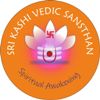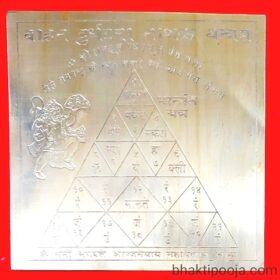- Empty cart.
- Continue Shopping
Sri Kuber Yantra (Small Pocket Size)
₹101.00Current price is: ₹101.00. Original price was: ₹251.00.
Sri Kuber Yantra, This Yantra is made of 100% Copper, engraved perfectly, 100% accurate and glaring. This Yantra can be kept at home/workplace by anyone on any Monday at your worship place or drawing-room. This Yantra is kept in Moneybox for wealth.
This Siddha Sri Kuber Yantra is energized by mantras.
Size of Yantra is 1.5 x 1.5 inches.
Yantras are generally geometrical designs imprinted on a copper or silver plate. These days we also see them in multi-coloured inks on paper and 2D and 3D form. Among the sacred symbols manifested by the Vedic Rishis, yantras are predominantly regarded as devices for devotional sadhanas or practices, and as objects to direct our mind and worship. These are used as tools for mental concentration and meditation.
Keeping a specific yantra in a particular direction in the home, worshipping it and concentrating upon it is said to have distinct auspicious effects. A mantra is the generator of specific currents of sublime sound and its perceivable manifestation; a yantra is a monogram – a spectrograph of this sonic energy. In terms of their spiritual effects, yantras are like schematic sketches of the contours or structures of divine energy fields.
Likewise the images of gods in the temples, yantras are revered and worshipped as symbols of divine powers. The Devi Bhagavat (3|26|21) states – Archabhave Tatha Yantram; meaning – a yantra symbolizes a divine power. Similar meanings are indicated Purana, Gautamiya Tantra, Yogini Tantra, and several other Vedic scriptures.
Yantras are also referred as the abodes of the divine powers of God, or of the deity that it represents. This is why most of the Vedic yantras are named after different divinities, such as Ganesa-yantra, Sri-yantra, Gopala-yantra, etc. Each yantra needs to be installed with the use of particular mantras, similar to the temple installation of a deity. Which yantra is placed in which direction and how its worship and devotional sadhana is to be performed – the knowledge of these constitutes science in itself that has linkage with the Vedic cosmology and sciences of mantra, Tantra, and Vastu.
A dot (.) in the cryptography of yantra symbolizes absoluteness, completeness. In terms of the manifestation of Nature in the universe, it is a symbol of the nucleus of cosmic energy and hence represents the power-source of all activities and motion. Its spiritual implication is pure knowledge, enlightenment, and ultimate realization. The expansions of a dot in circular forms, in a yantra, symbolize related expressions in varied forms. Combining the dots results in a triangle. Different lengths of the straight lines joining the dots, different angles between them, and the different triangular and other shapes generated there by together with free dots, circles, straight, curvilinear, convergent, and divergent Unes are the basic features/components of the structure of a yantra.
Everything that exists in the cosmos has some size and structure – perceivable or conceptualized – in subliminal, astronomical or Intermediate dimensions. Even the invisible subtle entities have ‘Shape” which could be “seen” through mental eyes. The sagacious minds of the Vedic Age had a deeper insight to see the invisible or sublime elements of nature and express them in a universal language of symbols.
They had thus invented a coding system of symbols, signs and alphabets (including digits) to represent the syllables of the seed mantras associated with the sublime fields of divine powers (devatas), natural tendencies of consciousness, emotional Impulses in a being. etc; and the five basic elements (pancha-tatvas), their etheric vibrations and energy fields, and the states and motions of the enormous varieties of sub-atomic, atomic, and molecular structures generated thereby. Specific configurations of these codes were then Incorporated in different yantras. Thus, by meditating on the yantras, and using particular mantras to invoke their potencies, would also awake higher powers within the mind and consciousness of the sadhaka, or practitioner. If done properly.
| Weight | 4.2 g |
|---|---|
| Dimensions | 3.8 × 3.8 cm |
Brand
Sri Kashi Vedic Sansthan





















Reviews
There are no reviews yet.